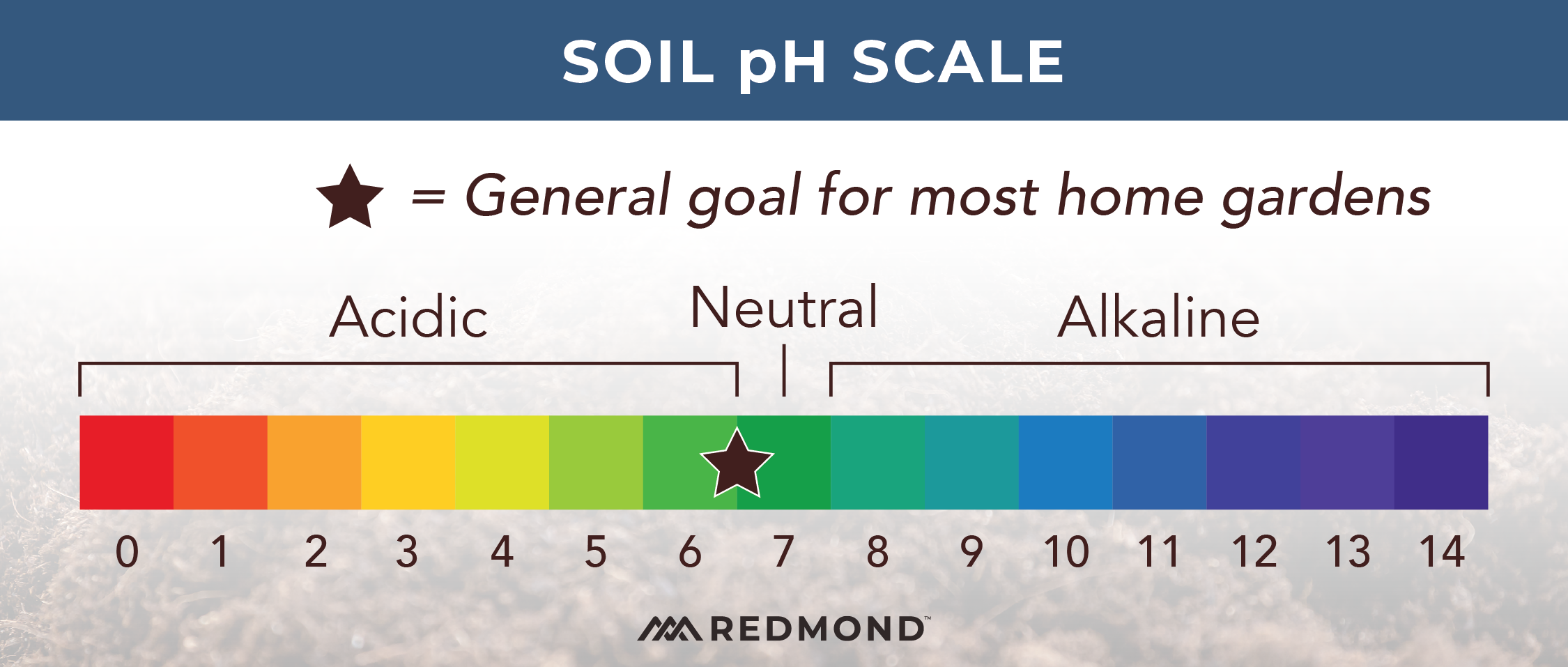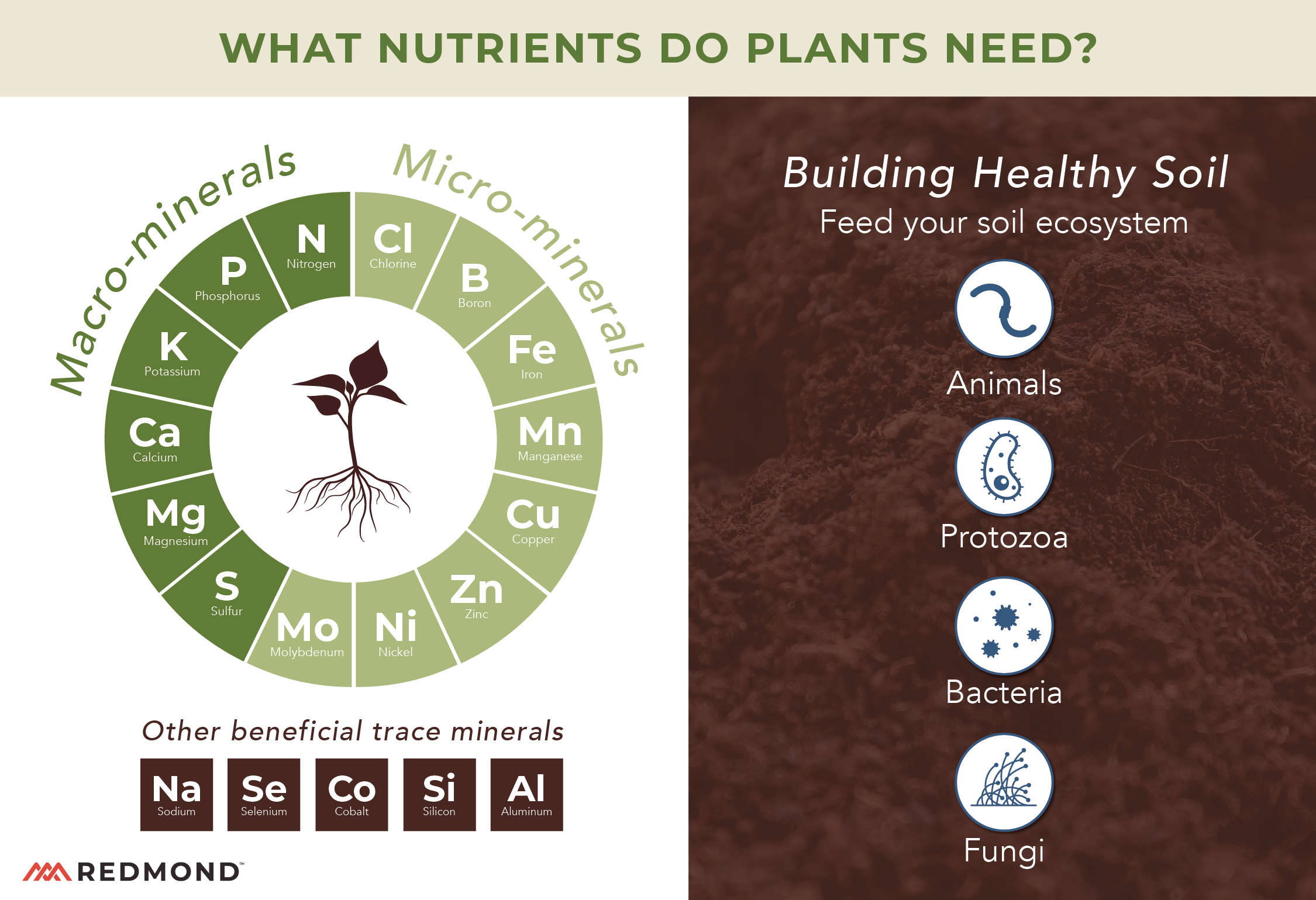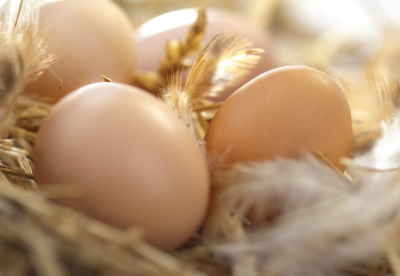SOIL HEALTH: Q&A WITH REDMOND’S SOIL EXPERTS
Answers to all of your soil health questions to help you get to know your ground better
Powered by: Brooke Loeffler October 31, 2025
Healthy soil is the foundation of every thriving farm, garden, and pasture—but even the best stewards of the land run into questions. From understanding soil pH and mineral balance to improving structure, moisture, and microbial life, there’s always more to learn.
SOIL HEALTH FREQUENTLY ASKED QUESTIONS
We asked our Redmond soil experts to tackle your most common soil questions and are here to help you get to know your ground a little better.
How can I tell if my soil is unhealthy?
Here are few clues to look for:
- Extremely dry: Dead soil that can’t hold moisture, can’t support life. Even when there are no plants currently growing, soil should be able to support an ecosystem of living and reproducing animals, bacteria, protozoa, and fungi. Without moisture, that web of life dies.
- Heavily compacted: Plant roots and soil organisms need aeration and loose soil to grow and move around their environment.
- Dying or poorly growing plants: Time to look at the nutrient levels (macro and micro nutrients) and pH balance in your soil…which means, it is time to do a soil test!
How often should I test my soil?
Usually fall and spring are the best times of year to test your soil because whatever amendments you add have time to get to work. Testing in the spring can show if your soil pH, minerals, and organic content are at the right levels before you do any spring planting. Testing in the fall can tell you if your soil is depleted after all the summer growth. Comparing these 2 tests can give you an even better picture of how much your soil's health can fluctuate and give you time to amend.
What’s the right pH for my soil?
Most home gardens should aim for between 6 and 7 on the pH scale. This range supports healthy microbial activity, and your plants’ ability to draw minerals and nutrients out of the soil. Very high or low pH can cause either nutrient deficiency or toxicity.

Some plants prefer more acidic soil, and other more alkaline soil, so you can amend specific areas of your garden if needed. Here’s a link to common garden plants and their pH preferences.
- To Lower pH (increase acidity): Elemental sulfur, aluminum sulfate
- To Raise pH (increase alkalinity): Sodium bentonite clay, bone meal, limestone, untreated wood ash
What’s the difference between macronutrients and micronutrients?
Macronutrients are needed in higher amounts, micronutrients are needed in lower amounts, but all are essential to plant growth.
Plants need the following macronutrients:
- Nitrogen
- Phosphorus
- Potassium
- Calcium
- Magnesium
- Sulfur
Plants also need these micronutrients:
- Chlorine
- Boron
- Iron
- Manganese
- Copper
- Zinc
- Nickel
- Molybdenum
There are also some trace minerals that are very beneficial to plants:
- Sodium
- Selenium
- Cobalt
- Silicon
- Aluminum

Should I till my soil?
A lot of modern farms are starting to notice the benefits of not tilling before planting:
Decaying organic matter
Old plant matter decays, breaks down, and distributes nutrients to your root zones, even without tilling.
Less fuel and labor
No tilling means fewer passes over fields and less wear and tear on machinery and your body. Save yourself time and unnecessary costs by giving no-till a try sometime.
Less soil erosion
Leftover plant matter greatly reduces erosion from wind and weather. Check out this side by side video of un-tilled vs. tilled soybean fields under high winds!
The 1st video shows a planted field of corn on corn no-till with debris blowing in 40 mph winds with gusts up to 60. The 2nd video is a planted field of corn on tilled bean stubble in the same windy conditions 1 mile away. #plant18 #servitech #erosion #stewardship pic.twitter.com/3DCqN1xHgO
— Clark Poppert (@Clark_Agronomy) April 30, 2018
This video shows soybean ground that was worked and planted to corn in 40 mph winds with 60 mph gusts. Earlier tweet showed same weather conditions but corn planted into no-till Corn stubble. #plant18 #servitech #erosion #stewardship pic.twitter.com/KlVJJOyrC6
— Clark Poppert (@Clark_Agronomy) April 30, 2018
Better moisture capture
Leftover plant residue holds precipitation, especially during the winter and early spring. Old plant stocks act as natural snow fences dropping snow onto your land instead of blowing over and stripping your topsoil of moisture, even during the off season.
Isn’t salt bad for soil?
Many decades ago, Dr. Maynard Murray found that measured amounts of sea minerals were extremely beneficial to soil health and plant growth. When applied in the proper amount, sea minerals invigorate microbial life and improve the electrical conductivity of your soil.
How do I improve clay or sandy soils?
First, you have to find out what kind of soil you have. The easiest way is to dig down several inches, gather some soil, dampen it, and try to compress it into a ball. If it doesn’t compress at all, your soil is sandy. If it compresses into a hard, solid ball, it’s clay heavy.
Amending clay soil
Examples of amendments for clay soil include:
- Peat moss
- Compost
- Manure
- Plant mulch: grass clippings, trimmings, and fall leaves
- Gypsum
- Perlite/vermiculite
- Humates
Amending sandy soil
Sandy soil amendments include:
- Compost
- Manure
- Mulch
- Biochar
- Coconut coir
- Humates
How can I make my soil more drought resilient?
Amending with sea minerals, volcanic conditioner, and humates to improve:
-
Energy levels in your soil’s ecosystem (electrical conductivity)
-
Ability to store and access water and nutrients (cation exchange capacity)
-
Redmond Mineralyte is nature’s perfect recipe for conditioning your soil into a more healthy and drought resilient environment for crops, pastures, and gardens. Learn more about how to improve soil quality with Mineralyte.
Rotationally graze livestock
Rotational grazing relieves pressure on stressed vegetation, improves pasture quality, evenly spreads manure, and helps keep your soil covered.
Keep soil covered
Bare ground loses moisture through evaporation into the air and can actually lower your water table.
- Leave crop residue (conservation tillage) after harvesting crops
- Plant cover crops
- Try permaculture or agroforestry practices
Go no-till or low-till
Regenerative ag practices of either no-tilling or very low depth tilling help keep hard-earned nutrients and moisture on your land.
What cover crops should I plant?
Cover crops not only protect your soil, but can actually restore nutrients to your root zones. Learn more about different types of cover crops and how they can help build healthy soil.



